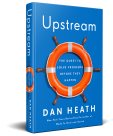Put yourself in the shoes of a technology product reviewer. You’ve got to praise or savage or critique the features of a product that, in all likelihood, your readers have never seen or held. Bad reviewers stay at 10,000 feet, describing a product in abstract terms, raving about its “elegant design” or slamming its “counter-intuitive interface.” Good reviewers, like Pogue, make the review concrete, giving the reader a vicarious sense of what it’s like to use the product.
Here’s an example from Pogue, who, in the course of eviscerating the new Blackberry Storm, makes its flaws painfully concrete:
It’s no help that the Storm shows you two different keyboards, depending on how you’re holding it (it has a tilt sensor like the iPhone’s).
When you hold it horizontally, you get the full, familiar Qwerty keyboard layout. But when you turn it upright, you get the less accurate SureType keyboard, where two letters appear on each “key,” and the software tries to figure out which word you’re typing.
For example, to type “get,” you press the GH, ER and TY keys. Unfortunately, that’s also “hey.” You can see the problem. And trying to enter Web addresses or unusual last names is utterly hopeless.
It’s such effective writing that you experience vicarious frustration…



